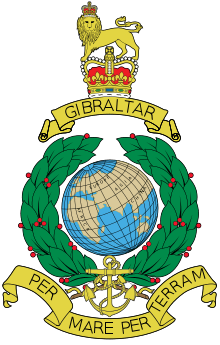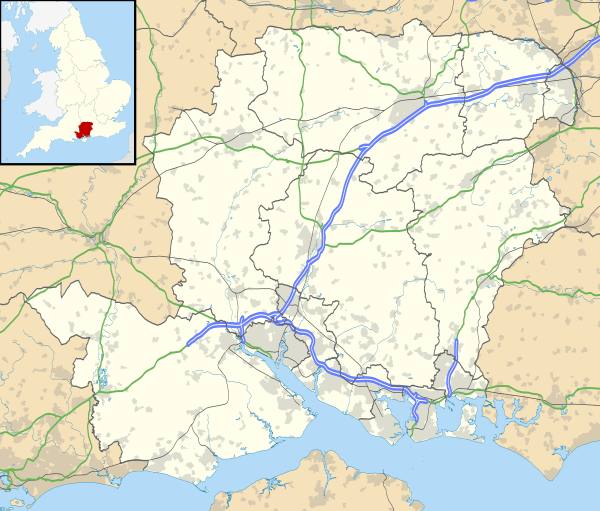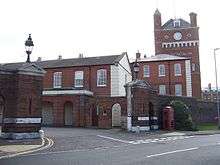Eastney Barracks
Eastney Barracks | |
|---|---|
| Eastney, Hampshire | |
 Gunners Row - the former barracks | |
 Eastney Barracks Location within Hampshire | |
| Coordinates | 50°47′08″N 1°03′17″W / 50.7855°N 1.0547°WCoordinates: 50°47′08″N 1°03′17″W / 50.7855°N 1.0547°W |
| Type | Royal Marines Base |
| Site history | |
| Built | 1867 |
| Built for | Admiralty |
| In use | 1867-1995 |
| Garrison information | |
| Occupants | Portsmouth Division, Royal Marines |
Eastney Barracks was a military installation occupied by the Royal Marines and located at Eastney near Portsmouth.
History
Eastney Barracks, designed by William Scamp (assistant director, Admiralty Works Department), was built as headquarters for the Royal Marine Artillery, who moved in from Fort Cumberland in 1867.[1] After the amalgamation of the Royal Marine Light Infantry and Royal Marine Artillery in 1923, Forton Barracks was closed and Eastney Barracks served as headquarters for the Portsmouth Division of the Corps. The series of seven linked blocks facing the sea forms the second longest barracks frontage in the country (after the Royal Artillery Barracks, Woolwich).[2] The ensemble has been called "the best and most complete barracks of the post-Crimean War period".[3] Eastney Barracks remained the Corps Headquarters until 1995, when it was sold and converted to private housing.[4] The Royal Marines Museum, established there in 1958, was accommodated in the former officers' mess at Eastney Barracks from 1972 to 2017.[5]
Local folklore and legend
The Barracks are reportedly home to two ghosts. One is a young girl, seen around the main steps to the entry, who according to local legend was crushed to death when she ran in front of a horse-drawn carriage. The other is the smell of burning and a depressing atmosphere, experienced by staff in the attic, which has been linked to the local legend of a 19th-century officer called Colonel Wolf who burnt his love letters and shot himself there after the end of a love affair.[6] It was therefore the location for an episode of the Antix Productions series Most Haunted Live! broadcast on 7 May 2006 as part of its Panic In Portsmouth strand, which included episodes from Wymering Manor and Southsea Castle.[7]
Gallery
Listed buildings
Other structures
.jpg) The Yomper statue
The Yomper statue St Andrew's (the Royal Marine Artillery Church)[14]
St Andrew's (the Royal Marine Artillery Church)[14]
References
- ↑ "Royal Marines Museum - Commandants of the Royal Marines Portsmouth Division". Memorials in Portsmouth. Archived from the original on October 6, 2014. Retrieved 28 May 2016.
- ↑ "Bamford House, Dowell House, Finch House, Halliday House Former Long Barracks and Screen Walls to E, Portsmouth". British Listed Buildings. Retrieved 28 May 2016.
- ↑ Pevsner, N (2002). The Buildings of England: Hampshire and the Isle of Wight. Yale University Press. ISBN 978-0300096064.
- ↑ "Inland Planning" (PDF). Portsmouth Society News. August 1995. Retrieved 22 May 2016.
- ↑ "Royal Marines Museum to be moved to new home in Portsmouth Historic Dockyard". Portsmouth News. 17 October 2013. Retrieved 22 May 2016.
- ↑ Scanlan, David (2013). Paranormal Hampshire. Amberley Publishing. ISBN 978-1848682573.
- ↑ Most Haunted Live! on IMDb
- ↑ Listed building entry
- ↑ Listed building entry
- ↑ Listed building entry
- ↑ Listed building entry
- ↑ Listed building entry
- ↑ Listed building entry
- ↑ Conservation are report




